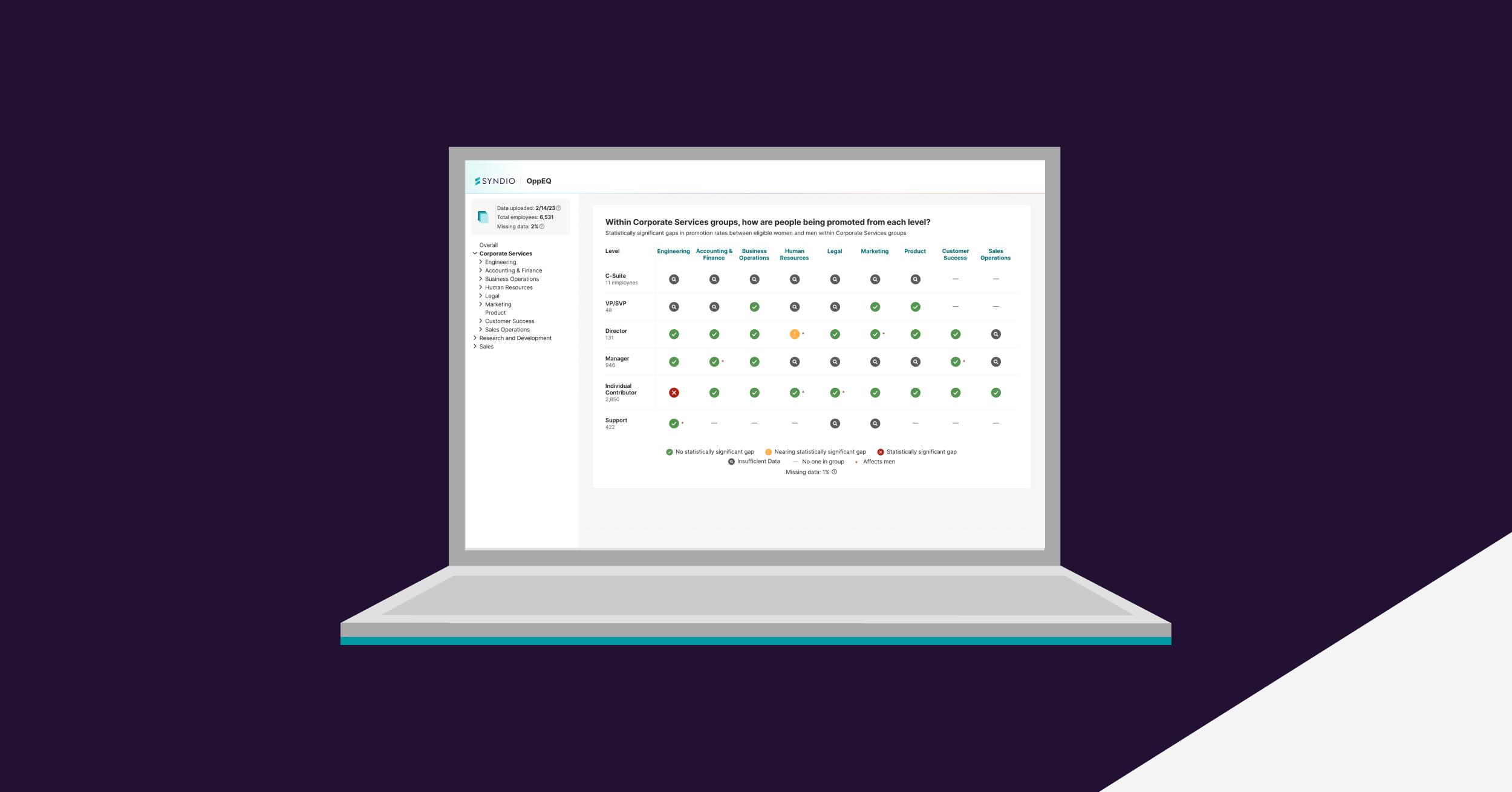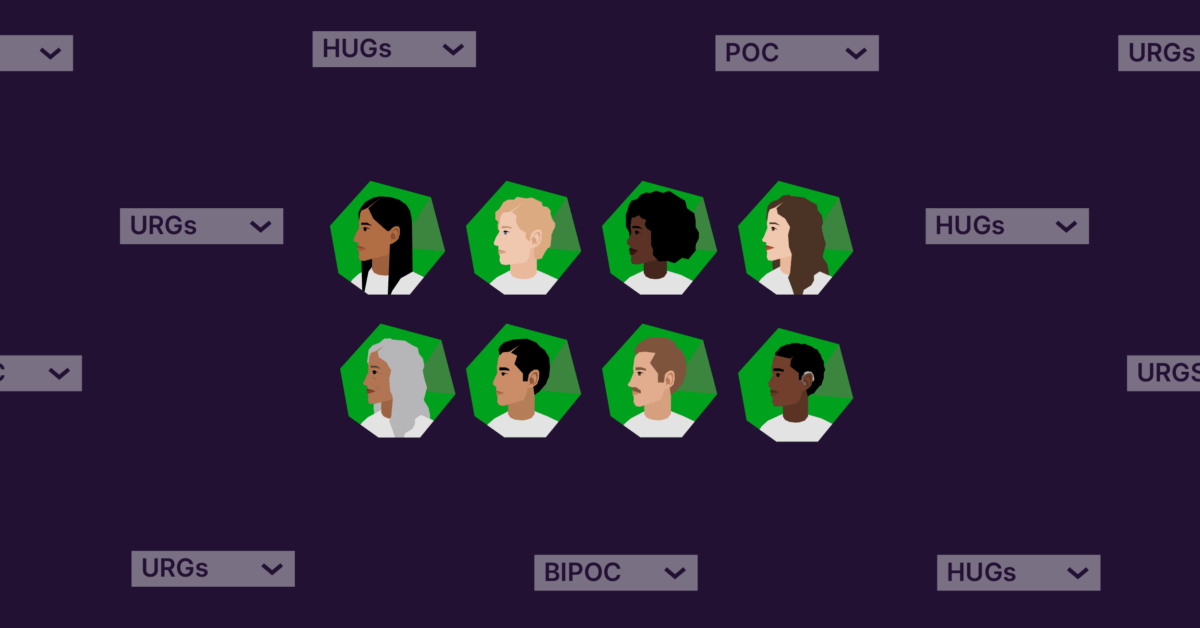Equal Pay Day is here again — a day that, in an equitable world, would be January 1 for everyone. It’s nearly been 50 years since President Kennedy signed the Equal Pay Act, yet women as a whole in the U.S. still make only 84% of what men do. Pay inequity receives much of the spotlight around the gender pay gap, but the hard reality is that you cannot truly close the pay gap without tackling opportunity inequity, particularly promotion gaps.
According to LeanIn and McKinsey & Co. research, women are 13% less likely than white men to be promoted, with an even larger disparity of 18% for women of color. These inequitable promotion rates contribute significantly to pay gaps by holding women and people of color from advancing to higher-level positions with higher pay.
To try to solve these gaps, many companies have over-indexed on hiring diverse leaders from the outside. But that approach is simply a band-aid that doesn’t fix the true root cause, which is that women and people of color are systematically held back from advancing at equitable rates at most organizations. And as many organizations implement hiring freezes in the face of an uncertain economy, they won’t be able to hire their way to improving their pay gap, anyway.
To make Equal Pay Day January 1 for everyone, it’s time that businesses start taking a hard look at promotion equity in their organization — and commit to actionable solutions to tackle it head on. That’s why Syndio has launched a new Promotions analysis tool in our OppEQ® solution. OppEQ measures your current demographic makeup, benchmarks against available talent, and helps you develop meaningful representation goals. Now with the new Promotions analysis tool, it also helps you uncover inequities in promotions and empower teams to be accountable for providing equal access to opportunities for everyone.
Learn more about OppEQ Promotions below.
Why it’s important to track and analyze opportunity equity and promotion rates
The Women in the Workplace 2022 report from LeanIn and McKinsey & Co. found that there’s a growing representation drop-off for women when moving up the corporate ladder: while the average company’s entry-level workforce was approximately split evenly between men and women, only 38% of managers were women, 33% of directors, 28% of senior vice presidents, and 21% of C-suite executives.
“A deeper dive into the data reveals that the drop-off of women [in leadership representation] is primarily driven by gender disparities in promotion rates, not gender differences in hiring or retention.”
– Harvard Business Review | Achieving Gender Balance at All Levels of Your Company
As pay equity is put under the microscope in the era of pay transparency, the need for pay explainability has emerged as a new and urgent requirement for every employer. But this is often an “If you give a mouse a cookie…” scenario, because once employees understand their pay structure, they start asking more challenging questions about how to progress and why others are advancing before them. This opens the door on a whole new landscape of accountability, forcing leaders to ensure employees are given equal opportunities for growth, which leads to better paying and higher-level jobs – and prove it.
Why is it a challenge to promote equitably?
Promotions happen all the time and are largely driven by the discretion of managers and other leaders, often based on subjective factors. A 2022 study into the causes of gender-based promotion gaps found that female employees were 13% less likely to be promoted than their male counterparts — despite outperforming them — due to women receiving lower overall ratings for their “potential” than men.
CHROs need to hit representation goals, but DE&I staff and budgets continue to lack resources, and they’re often a hammer looking for nails without the right tech, tools, or data insights to focus their efforts efficiently. Some companies have started measuring whether promotions are equitable, but to really pinpoint problem areas, they run manual analyses for many different teams, slice and dice the data based on gender, race, and intersectionalities, and repeat this work every promotion cycle. It’s arduous and leads to companies looking into promotion gaps infrequently, at best.
So what’s the way forward? Give decision makers the right nails to hammer: clear line of sight into where problems are occurring and what success looks like, and hold them accountable for doing better.
That’s where OppEQ® comes in. OppEQ is the opportunity equity analytics toolset within Syndio’s Workplace Equity Analytics Platform, built to help leaders understand the full scope of how they can impact representation goals — whether it’s hiring, promoting, or retaining employees more equitably. For the first time, HR, DE&I, and Total Rewards/Compensation teams are armed with the insights they need to set attainable goals, measure impact, and hold senior leaders throughout the organization accountable to make progress.
OppEQ’s current feature set includes:
- OppEQ representation analysis: Analyzes your current workforce to understand what representation looks like across levels and departments to help you answer “what does our company look like now?”
- OppEQ levels & benchmarking analysis: Helps you answer “what should we look like?” by benchmarking your employee population against both internal talent availability and external labor pool data. This lets you identify your biggest gaps to prioritize as goals.
- OppEQ Forecaster: Helps you clearly answer the question “when will we reach our goals?” and test scenarios that could accelerate progress.
- New! OppEQ Promotions: This newest module makes it fast and easy to identify promotion disparities by gender, race, and intersectionalities. You can analyze promotions data regularly (e.g. quarterly, annually) or you can find and address issues before you roll out any changes. Italso enables you to identify disparities at a company level or drill into individual teams and departments where decisions are being made.
How OppEQ Promotions works
OppEQ Promotions is a SaaS solution that analyzes your people data to identify promotion gaps. Key features include:
- Statistical analyses — Identify statistically significant disparities and flag watch areas.
- Eligibility criteria — Exclude employees not eligible for promotions from your analysis.
- Controls — Explain and control for factors leading to differences in promotion rates.
- Easy filtering — Roll up or disaggregate your data with just a few clicks.
- Data visualizations — Easily communicate problems to all your stakeholders, driving accountability and shared goals.
“Most companies also need to take specific, highly targeted steps to fix their “broken rung.” This starts with identifying where the largest gap in promotions is for women in their pipeline—for a majority of companies, this will be at the first step up to manager, but it could be at higher levels, too. Then companies need to make sure women and men are put up for promotions at similar rates, monitor outcomes to make sure they’re equitable, and root out biased aspects of their evaluation process.”
– Women in the Workplace 2022 report | LeanIn and McKinsey & Co.
The objective of a promotions analysis is not to suggest a quota or that you should simply promote the number of people that would make groups equal — rather, the goal is to understand how far off your organization is from proportional promotion rates, both across the organization and within specific teams. With OppEQ Promotions, you can drill down to see details around the likelihood of women to be promoted from each team within an Engineering group, for example. Armed with this insight, you can start to ask the questions that will help you dig into what is driving those gaps and identify how best to optimize your resources to close them, such as:
- Are people aware of opportunities?
- Are jobs posted or filled by a tap on the shoulder?
- Who is applying for the promotion?
- What is the process for making promotional decisions?
- Is this a problem with the company process or policy, or is this a problem with a given leader?
Surfacing these problems will dictate how you respond to them, helping you to allocate resources appropriately and focus on the areas of greatest need that will actually move the needle.
Close promotion gaps and lead the way
Employees, the public, and investors are demanding that companies take decisive action to close pay gaps, and that they are making consistent, explainable, and equitable decisions about their people. Achieving equal pay for equal work by itself is no longer enough — companies must also provide employees with equitable pathways to higher-paying roles. Leading companies are looking ahead to proactively address their opportunity gaps.
If you don’t feel confident in knowing where you have promotion gaps, what’s driving them, or how to talk about them, OppEQ can give you insights into your promotion landscape to enable thoughtful, data-driven action towards creating equitable career opportunities. Accelerate progress now with OppEQ.
Want to see OppEQ in action? We’d love to show you.


